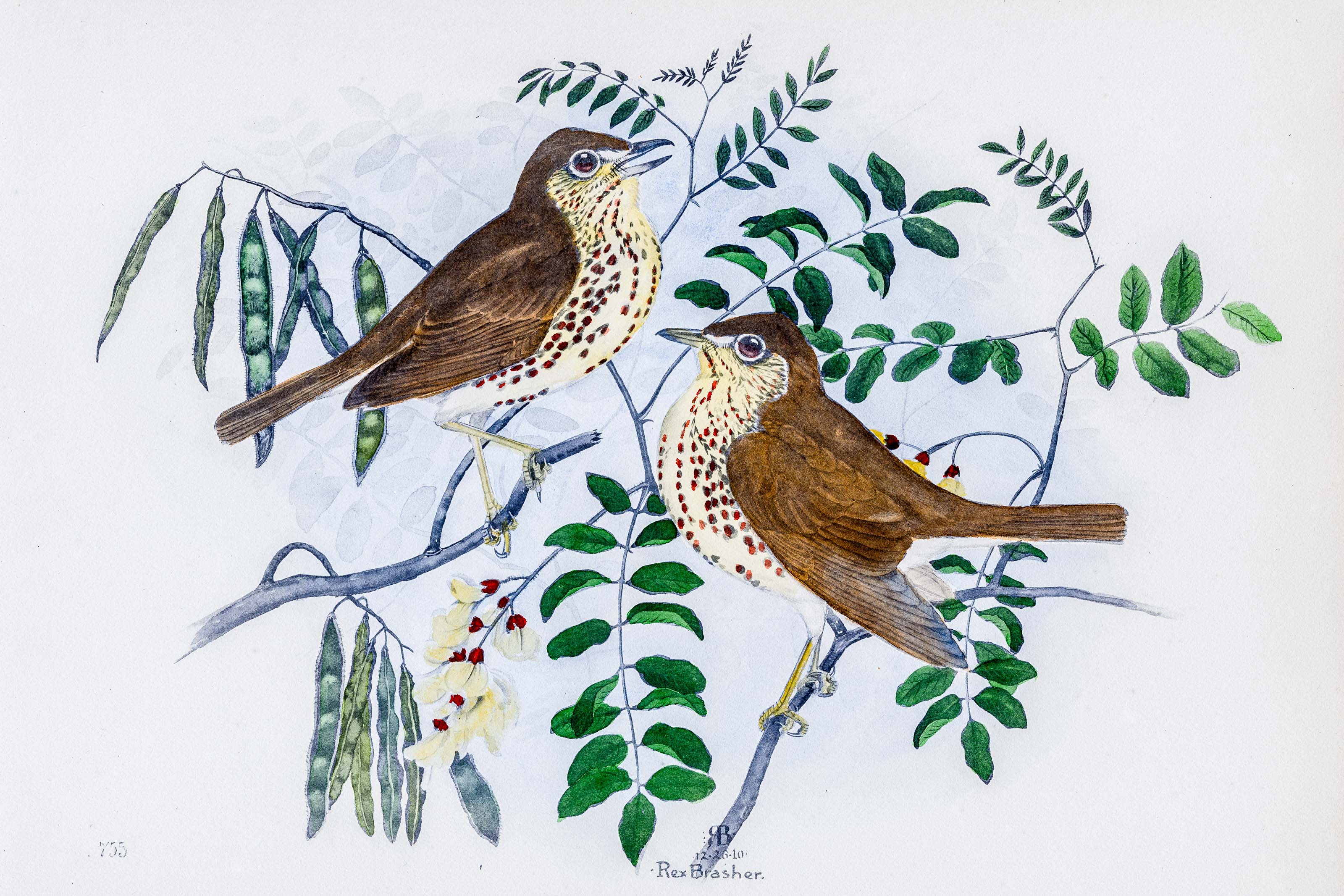
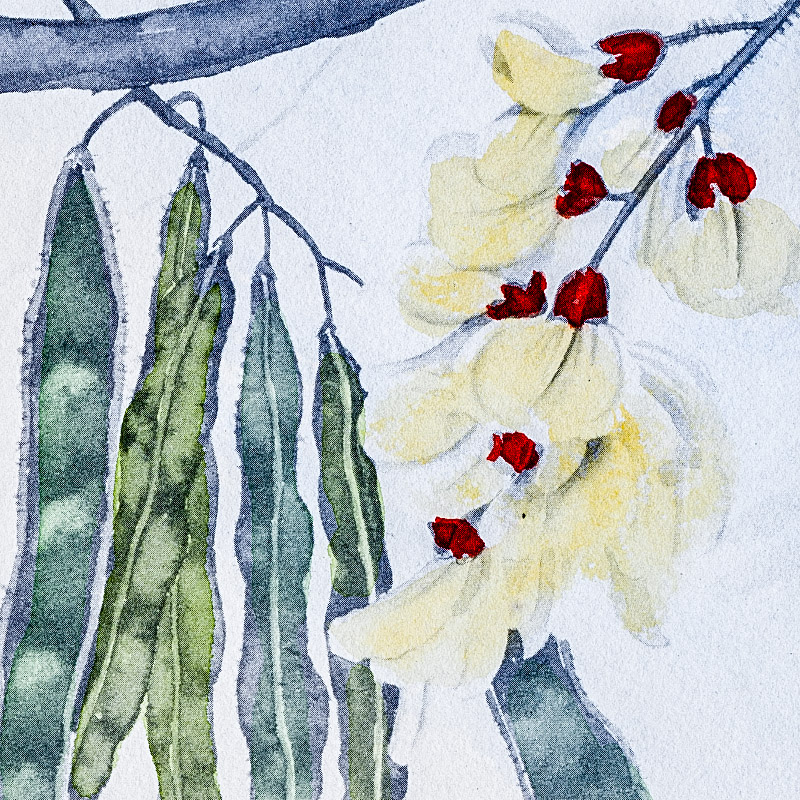

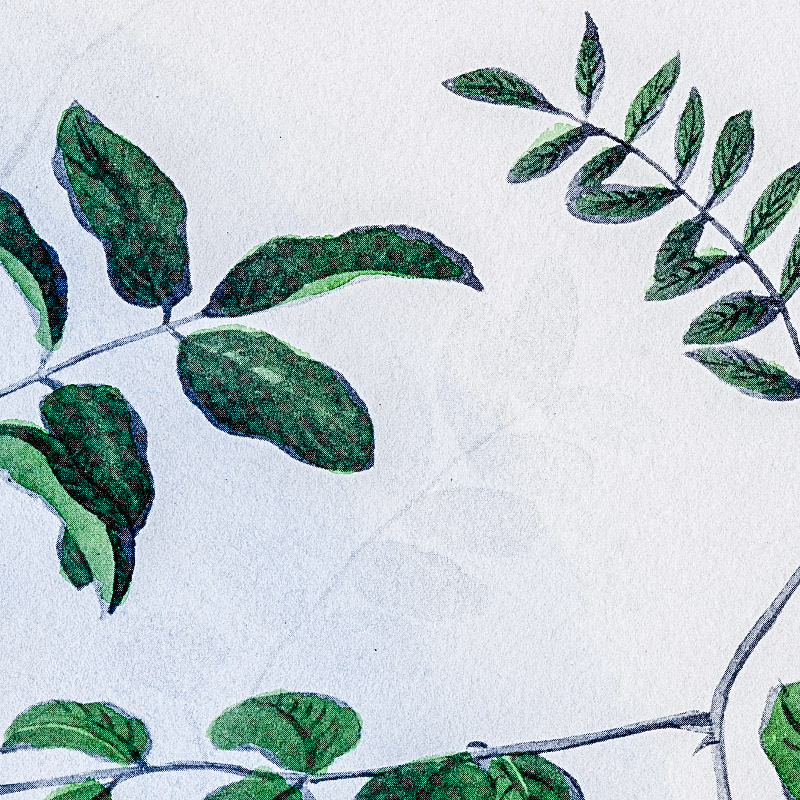
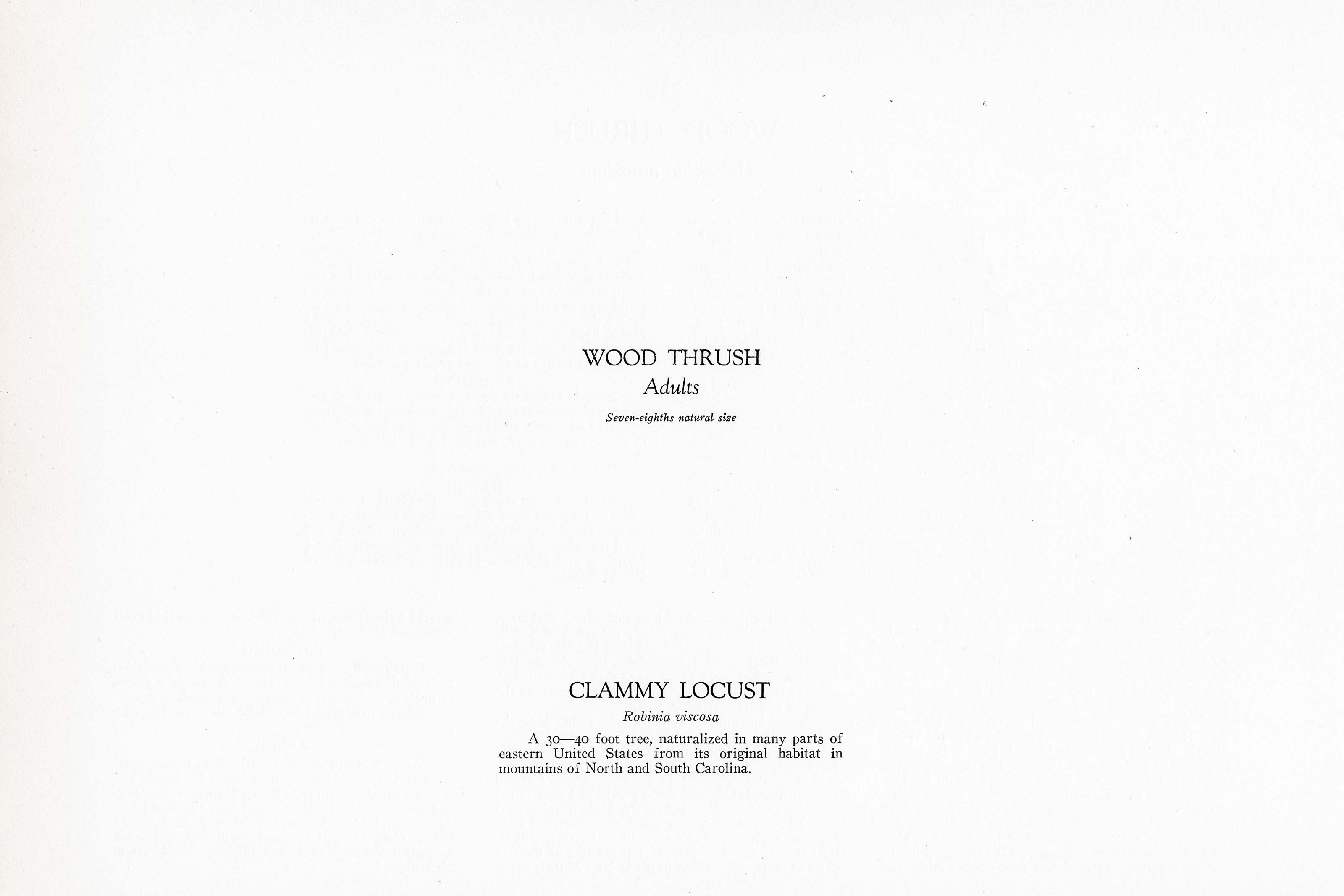
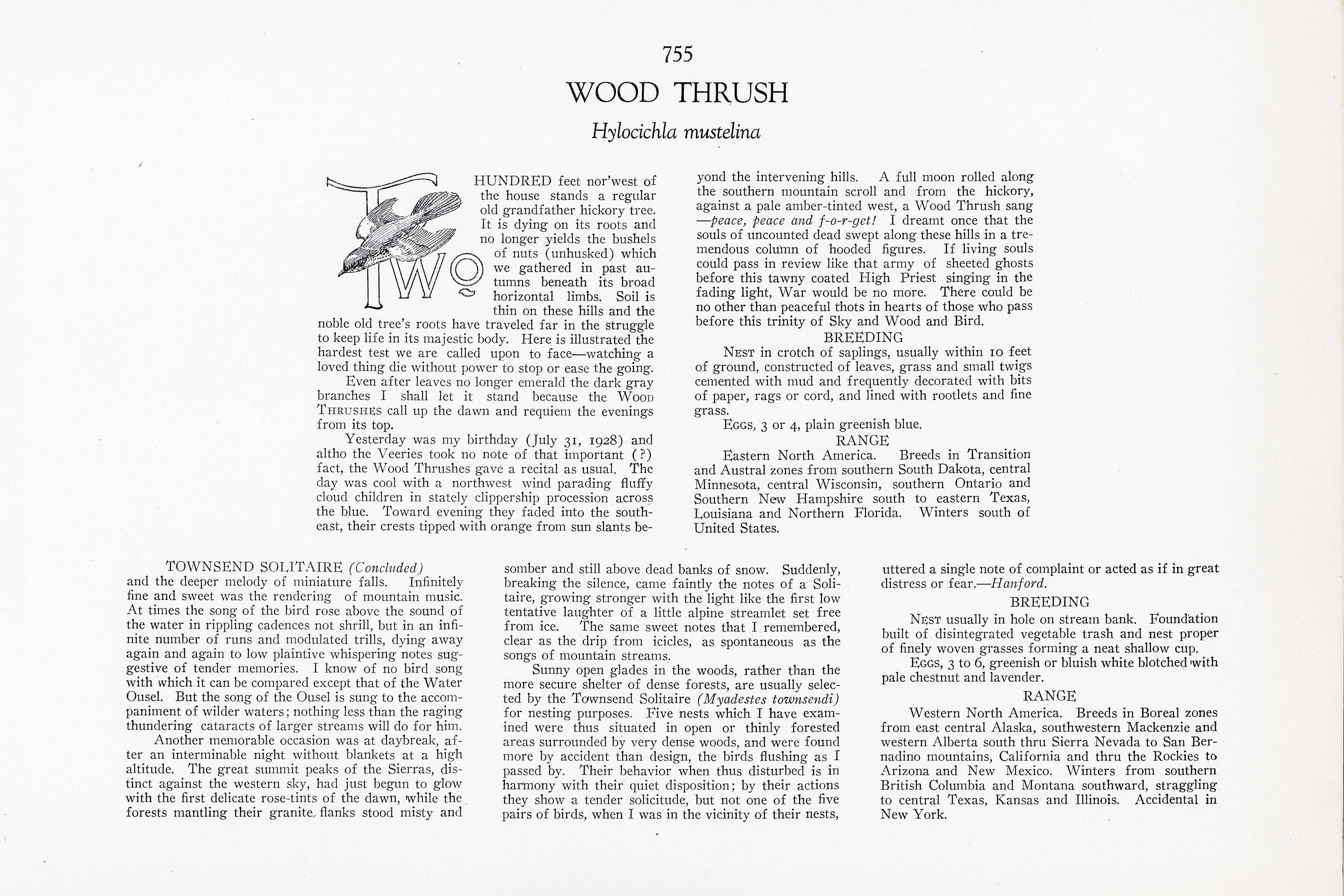

1910
1929
12
755
A team of dedicated board members, volunteers, and student interns has published every page in Volume 9. This volume includes 360 images of paintings and lyrical descriptions of birds, now available online for everyone to enjoy anywhere in the world. This is a monumental task. Each volume requires approximately 400 hours to photograph, edit, transcribe, catalog, and publish online. We need your support to complete this work.
If you're tech-savvy, have a good eye, are meticulous with details, and love structured data, please consider volunteering by emailing us at hello@rexbrasher.org.
We encourage all bird lovers and supporters to consider a monetary donation to support our mission to make Rex's work available for everyone. You can provide a one-time or recurring donation online.
TWO HUNDRED feet nor'west of the house stands a regular old grandfather hickory tree. It is dying on its roots and no longer yields the bushels of nuts (unhusked) which we gathered in past autumns beneath its broad horizontal limbs. Soil is thin on these hills and the noble old tree's roots have traveled far in the struggle to keep life in its majestic body. Here is illustrated the hardest test we are called upon to face — watching a loved thing die without power to stop or ease the going.
Even after leaves no longer emerald the dark gray branches I shall let it stand because the WOOD THRUSHES call up the dawn and requiem the evenings from its top.
Yesterday was my birthday (July 31, 1928) and altho the Veeries took no note of that important (?) fact, the Wood Thrushes gave a recital as usual. The day was cool with a northwest wind parading fluffy cloud children in stately clippership procession across the blue. Toward evening they faded into the southeast, their crests tipped with orange from sun slants beyond the intervening hills. A full moon rolled along the southern mountain scroll and from the hickory, against a pale amber-tinted west, a Wood Thrush sang — peace, peace and f-o-r-get! I dreamt once that the souls of uncounted dead swept along these hills in a tremendous column of hooded figures. If living souls could pass in review like that army of sheeted ghosts before this tawny coated High Priest singing in the fading light, War would be no more. There could be no other than peaceful thots in hearts of those who pass before this trinity of Sky and Wood and Bird.
NEST in crotch of saplings, usually within 10 feet of ground, constructed of leaves, grass and small twigs cemented with mud and frequently decorated with bits of paper, rags or cord, and lined with rootlets and fine grass.
EGGS, 3 or 4, plain greenish blue.
Eastern North America. Breeds in Transition and Austral zones from southern South Dakota, central Minnesota, central Wisconsin, southern Ontario and Southern New Hampshire south to eastern Texas, Louisiana and Northern Florida. Winters south of United States.
A 30–40 foot tree, naturalized in many parts of eastern United States from its original habitat in mountains of North and South Carolina.